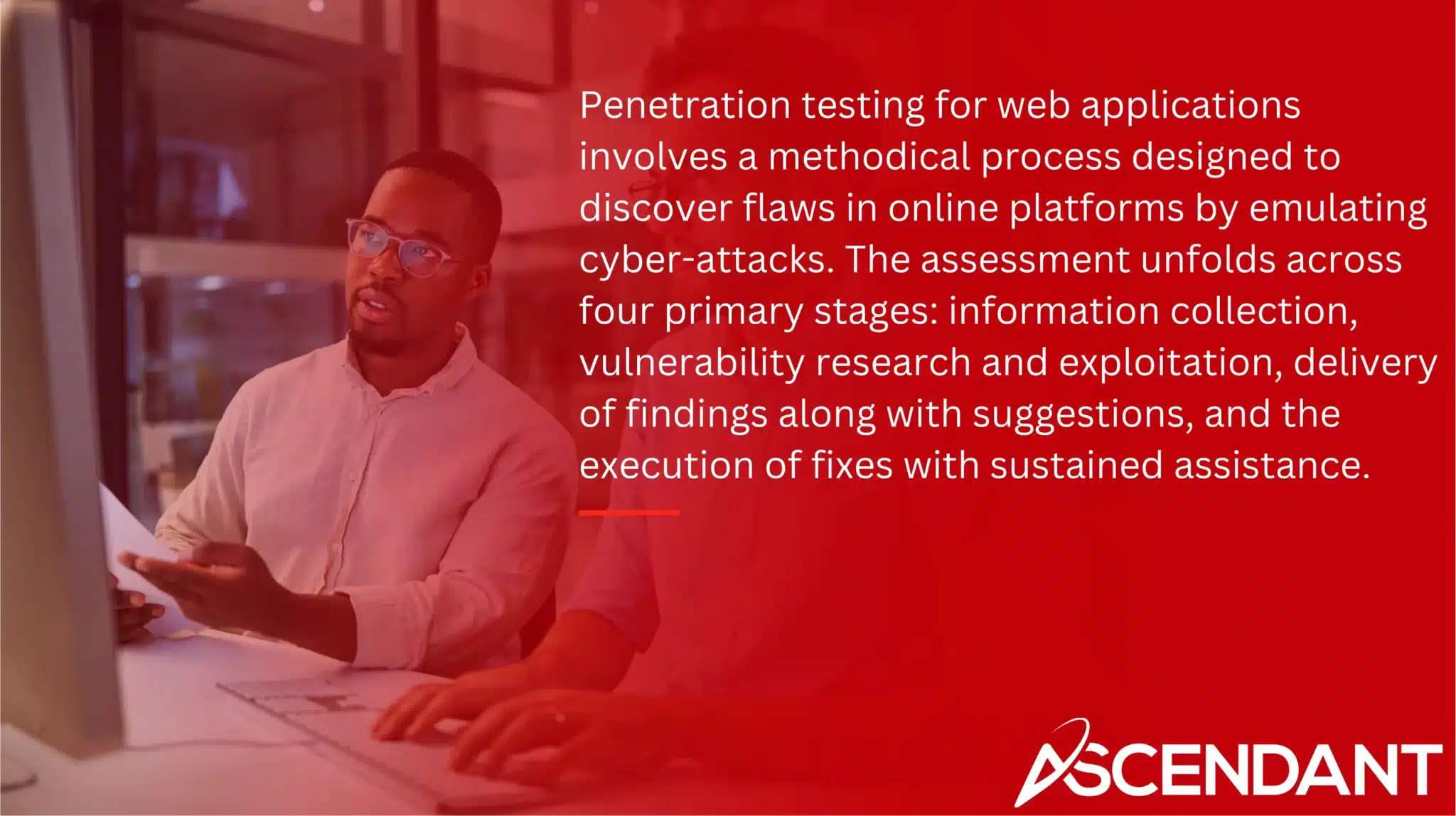Penetration testing helps find and fix security weaknesses. This article explains the main types of penetration testing, like network, web application, cloud, and social engineering, to improve your security measures.
In This Article:
- Understanding Penetration Testing
- Network Penetration Testing
- Web Application Penetration Testing
- Mobile Application Penetration Testing
- Cloud Penetration Testing
- API Penetration Testing
- Social Engineering Penetration Testing
- Physical Penetration Testing
- Red Teaming
- Black Box, Gray Box, and White Box Penetration Testing
- Benefits of Regular Penetration Testing
- Choosing the Right Type of Penetration Testing for Your Business
Key Takeaways
- Penetration testing is essential for identifying security vulnerabilities, helping organizations improve their cybersecurity posture and reduce the risk of potential data breaches.
- Different types of penetration testing, including network, web application, mobile, and API testing, address specific vulnerabilities and are crucial for a comprehensive security strategy.
- Regular penetration testing enhances compliance, builds consumer trust, and allows organizations to proactively address risks, ensuring their security measures align with evolving cyber threats.
Understanding Penetration Testing
Penetration testing, also known as pen testing, serves as an essential security strategy aimed at uncovering security weaknesses before they can be targeted by attackers. The primary goal of a penetration test is to reveal and exploit existing vulnerabilities in order to gauge the actual security stance of an organization. By identifying these technical deficiencies through pen tests, organizations can significantly diminish the potential for data breaches and other cyber threats while gaining valuable recommendations on how to rectify them. In this process, the role of a penetration tester is vital.
As part of comprehensive cybersecurity initiatives, organizations carry out penetration tests employing diverse tactics that address specific risks. These examinations are crucial not only for spotting technical vulnerabilities but also for improving overall security awareness within company staff members. Conducting regular penetration tests ensures enterprises maintain updated defenses capable of thwarting impending hazards.
The frequency with which an entity should undertake penetration testing corresponds with its exposure level. Companies operating in high-risk sectors or managing sensitive information may necessitate more frequent evaluations. Ultimately, the key value provided by consistent pen testing lies in offering a well-defined perspective on an enterprise’s defensive landscape—equipping stakeholders with insights necessary for reinforcing their protective measures against cyberattacks.
Network Penetration Testing
Penetration testing serves as a vital element in the overall security framework of an organization. It is conducted through simulated cyberattacks, similar to those encountered in real-world scenarios, targeting both external and internal aspects of network infrastructure to pinpoint susceptibilities that could be exploited. By engaging in this type of assessment, companies can gauge their defense mechanisms against intrusions and proactively fortify themselves against possible incursions. Comprehensive penetration tests are instrumental for revealing potential points of failure within the system.
In conducting such assessments, ethical hackers or penetration testers employ diverse techniques aimed at breaching networks. Their efforts encompass probing from server room securities to evaluating network services for any signs of vulnerability. Conducting regular penetration tests is imperative for organizations striving to detect and rectify gaps in their network defenses promptly, thereby safeguarding sensitive information from falling into unauthorized hands.
Web Application Penetration Testing

Penetration testing for web applications involves a methodical process designed to discover flaws in online platforms by emulating cyber-attacks. The assessment unfolds across four primary stages: information collection, vulnerability research and exploitation, delivery of findings along with suggestions, and the execution of fixes with sustained assistance. Penetration testers exploit security holes such as SQL injections and XSS within these systems to determine which issues should be fixed first to enhance protection effectively. Insights garnered from conducting a penetration test on web applications are instrumental in understanding their security vulnerabilities.
A pivotal element of application penetration testing is pinpointing user interaction points within web applications—these endpoints are critical for executing an exhaustive analysis. In organizations that develop enterprise software, penetration testers play an integral role by continuously scrutinizing code for weak spots so that existing safety protocols remain strong and current.
For successful outcomes in web application penetration tests, it’s vital that reports classify identified vulnerabilities according to their threat level. By addressing the most critical concerns swiftly before moving onto medium and minor risks, enterprises can neutralize severe threats without delay. This strategy not only exposes security weaknesses but also aids entities in bolstering their cyber defenses through effective solution implementation.
Mobile Application Penetration Testing
In our current era where mobile technology dominates, the security of mobile apps takes on critical importance. Mobile application penetration testing is designed to discover security flaws within apps created for platforms such as Android by Google and iOS by Apple, employing a combination of static and dynamic analysis methods to detect possible risks.
By performing penetration tests on their mobile applications, organizations can confirm adherence to secure design principles and safeguard user data from being compromised. This preventative strategy is essential in pinpointing and rectifying vulnerabilities before they become targets for hostile entities, thus ensuring both the integrity and privacy of mobile software solutions.
Cloud Penetration Testing
With the growing reliance on cloud services among businesses, the importance of cloud penetration testing has surged. This form of penetration test is conducted to assess an organization’s security within its cloud-based infrastructure and solutions, pinpointing vulnerabilities that may have emerged during migration to these services. Addressing unique threats posed by Infrastructure as a Service (IaaS), Platform as a Service (PaaS), and Software as a Service (SaaS) requires tailored security strategies.
In the realm of cloud services, there is a defined separation known as the shared responsibility model, which clarifies what aspects of security fall under the user versus service provider. For example, users are responsible for safeguarding their own operating system and applications in an IaaS setup. Conversely, in SaaS environments, providers tend to handle most facets related to security. Engaging in cloud penetration tests offers valuable perspectives on an enterprise’s defensive stance against cyber risks using various approaches including manual reviews alongside black or gray box methodologies.
Legal limitations along with certain technical difficulties must be kept front-of-mind when undertaking tests for penetrating cloud defenses—aimed at reinforcing ‘Security in the Cloud.’’ By proactively scouring for weak spots through such assessments, organizations can better strategize how they shield their platforms from imminent digital hazards. Thus, enabling them to confidently take measures necessary not only to correct any found flaws, but also fortifying protection around their sensitive information assets.
API Penetration Testing
API penetration testing is a crucial element in safeguarding the security of modern applications, as APIs serve as integral components. This process entails conducting simulated assaults on APIs to uncover potential security vulnerabilities such as inadequate access controls, authentication failures, and unintended exposure of sensitive data. During these tests, penetration testers scrutinize different kinds of APIs like REST, SOAP, and GraphQL by replicating authentic attack circumstances with the aim to detect any flaws.
During API penetration tests, various common vulnerabilities are examined including Mass Assignment – which poses a risk that attackers could improperly modify object attributes – and Server-Side Request Forgery (SSRF), wherein attackers might manipulate internal services for exploitation. It’s vital to identify and rectify these shortcomings in order to fortify the protection against illicit entry points into an API’s structure ensuring its strength and defense mechanisms remain intact.
Social Engineering Penetration Testing
Penetration testing that zeroes in on human susceptibility is known as social engineering penetration testing. This form of assessment employs tactics including phishing, vishing, and impersonation to exploit employees with the intent of illicitly acquiring sensitive data. The main objectives of these tests are two-fold: pinpointing those who are most at risk and elevating the general knowledge about security across the company.
To combat the threat posed by social engineering attacks, one effective strategy is to initiate awareness programs targeting staff education on imminent dangers. Conducting consistent penetration tests focused on social engineering helps reveal where security may be compromised while also equipping team members with the necessary skills to recognize and thwart such intrusions effectively.
Physical Penetration Testing
Penetration testing in the physical domain involves mimicking actual threat scenarios to evaluate an organization’s tangible security controls. The purpose of these penetration tests is to uncover weaknesses within physical defenses like locks and barriers, thus providing opportunities for corrective measures and improving insight into potential threats faced by the organization. Physical onsite assessments check adherence to established security policies, while offsite evaluations focus on gauging users’ awareness of security practices in common situations. By emulating genuine attack strategies, physical penetration testing assures thorough scrutiny of safety protocols.
Should a malicious actor manage to infiltrate secure premises physically, they might jeopardize the entire network system. Conducting physical penetration tests is crucial for revealing shortcomings in safeguard mechanisms, which then enables organizations to initiate appropriate enhancements that fortify their defenses against possible intrusions comprehensively.
Red Teaming
Red teaming employs a sophisticated adversarial strategy to test and question the security measures of an organization. It goes beyond conventional penetration testing by replicating real-life attack situations that assess how effective an organization’s overall security framework is, encompassing cyber, social engineering, and physical elements to gauge the readiness and vigilance of the security personnel.
Employing covert methods during red team operations allows for evaluation of how well an entity can handle threats without being aware they are part of a test. The main aim is to identify weaknesses within an organization’s defenses, offering valuable perspective on its capacity to notice and counteract various types of attacks. Such red team engagements serve as important tools in refining strategies for detection and response, solidifying the integrity of security protocols.
Black Box, Gray Box, and White Box Penetration Testing
Penetration testing can be divided into three distinct types: black box, gray box, and white box. Each type is determined by the amount of information provided to testers before they begin their assessment. In a black box penetration test, the tester enters with minimal or no knowledge about the inner workings of the application being tested. This replicates an attack from an external threat actor’s perspective and aids in spotting security flaws that could be exploited by someone without inside access.
During a gray box penetration test, testers possess partial insights regarding the application’s structure which allows for a targeted yet comprehensive evaluation akin to scenarios involving potential insider threats. It offers a middle ground between black and white-box tests by integrating elements from both approaches for identifying system vulnerabilities.
Conversely, white box penetration testing involves an exhaustive analysis where complete access to source code and detailed system information is available to testers. White-box tests enable meticulous security inspections allowing discovery and rectification of all possible points of weakness within systems or applications. Comprehending these different methods enables organizations to opt for tailored security assessments aligned with their specific requirements.
Benefits of Regular Penetration Testing
Maintaining a strong defense against the continuously changing landscape of cyber threats is crucial, and regular penetration testing plays an essential role in this process. By conducting consistent tests to uncover vulnerabilities, organizations can take preventive measures to address these weak spots before attackers have a chance to exploit them. This strategy not only bolsters security, but also aligns with various industry regulations and standards, ensuring adherence to compliance requirements.
Executing penetration tests allows for the refinement of incident response plans by using insights gained from identified weaknesses, thereby improving strategies for detection and reaction in future scenarios. To strengthen defenses, periodic penetration testing builds consumer confidence through evident dedication towards safeguarding data privacy and maintaining high levels of cybersecurity. Embracing such an all-encompassing method positions organizations well ahead of looming cyber risks while solidifying their overall security stance.
Choosing the Right Type of Penetration Testing for Your Business
You need to select the right type of penetration testing that aligns with your company goals which may be protecting customer information or business continuity. Assessing your organization’s risk tolerance is a key step in determining the right penetration test approach. You need to consider resource availability, budget constraints and internal expertise.
When deciding on a specific type of penetration test, companies need to weigh the risks they face. For example industries that are at higher risk or dealing with sensitive data may need to do more thorough and frequent testing. Engaging certified professionals in penetration testing can increase its effectiveness by ensuring accurate identification and remediation of security weaknesses.
 Summary
Summary
Penetration testing is part of any robust cybersecurity strategy. From network and web application testing to more specialized types like cloud and API penetration tests, each type plays a crucial role in finding and fixing security vulnerabilities. Regular penetration testing not only enhances an organization’s security posture but also ensures compliance with industry regulations and builds customer trust.
By understanding the different types of penetration testing and choosing the right one for your business you can proactively protect your digital assets and stay ahead of threats. Make penetration testing a part of your cybersecurity efforts and keep your organization secure in an ever changing threat landscape.
Frequently Asked Questions
What are the 5 phases of penetration testing?
The 5 phases of penetration testing are reconnaissance, scanning, vulnerability assessment, exploitation and reporting. Each phase is critical to finding and fixing security weaknesses.
What are the 7 phases of penetration testing?
The 7 phases of penetration testing are pre-engagement, reconnaissance, discovery, vulnerability analysis, exploitation, reporting and remediation.
These steps help security professionals assess and improve an organization’s security.
What are the 3 types of penetration testing?
The 3 types of penetration testing are black-box, white-box and gray-box testing, each provides different level of information to the tester.
These approaches cater to different testing needs and security requirements.
What is the purpose of penetration testing?
The purpose of penetration testing is to find and exploit vulnerabilities, to give an insight to the organization’s security posture. This process helps organizations strengthen their defenses against threats.
How often should penetration testing be done?
Penetration testing should be done regularly, more frequent for organizations in high risk industries or those handling sensitive data.
This proactive approach helps to mitigate security vulnerabilities.

